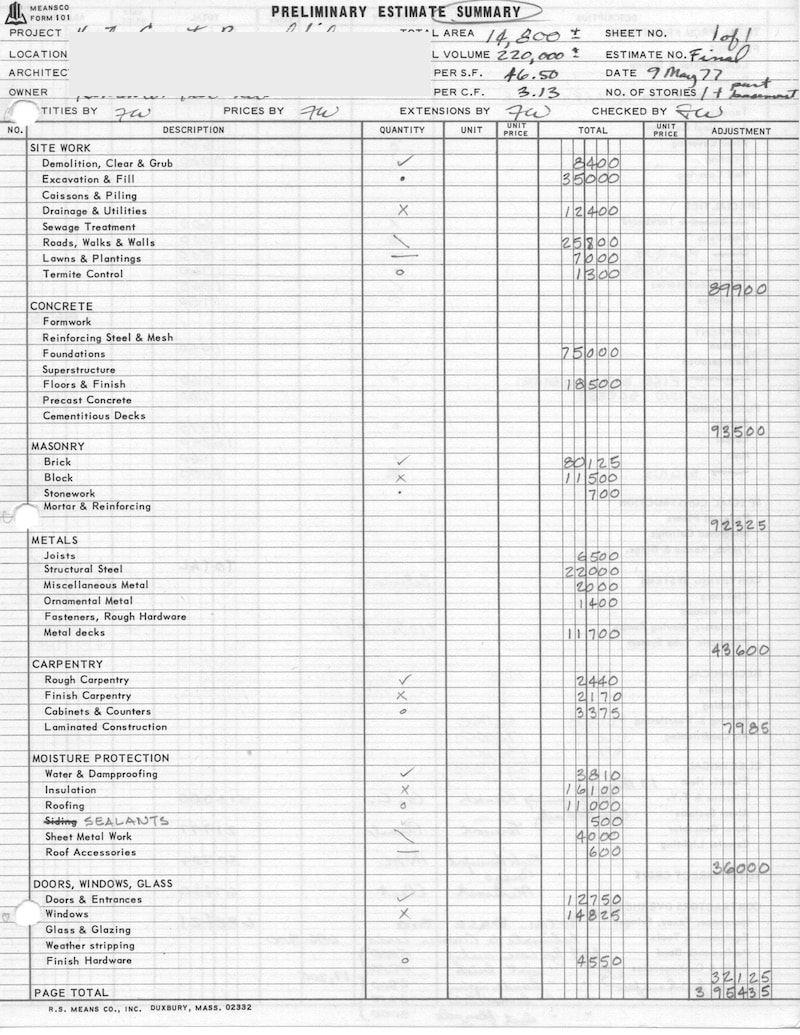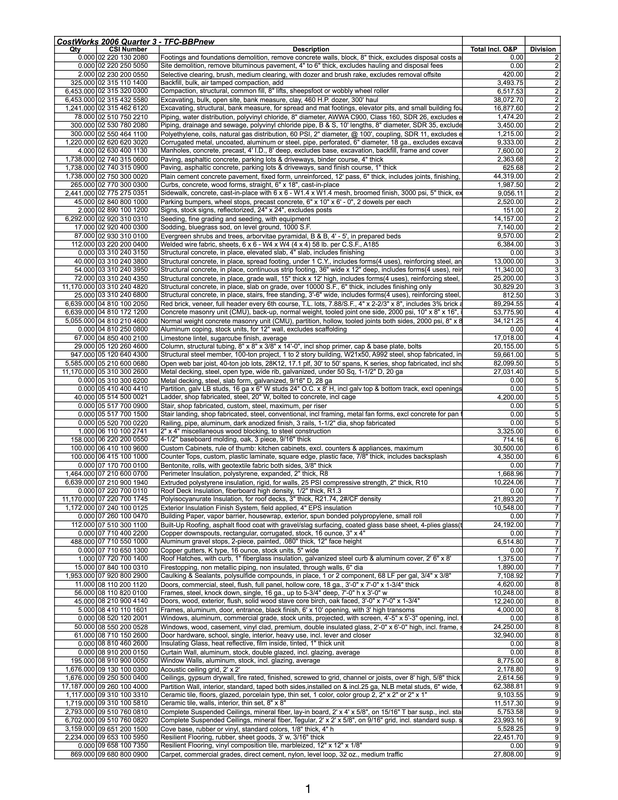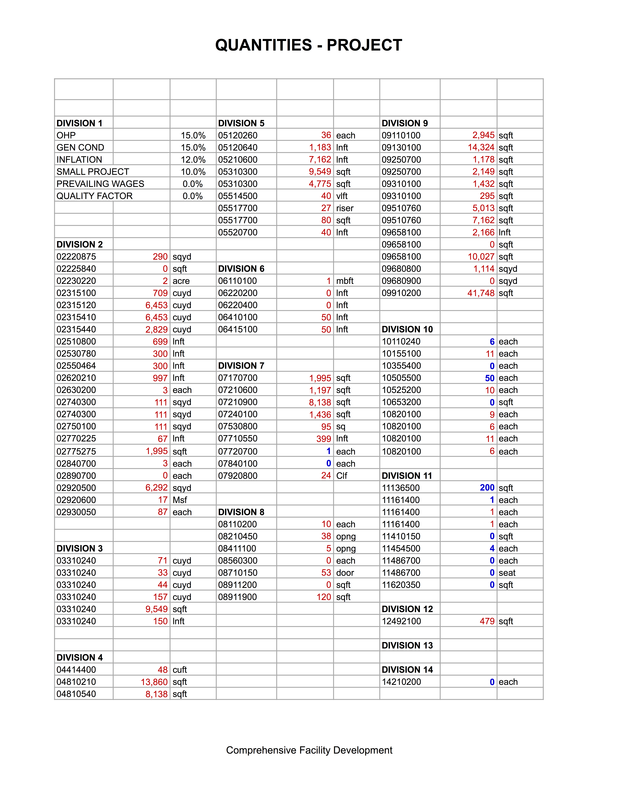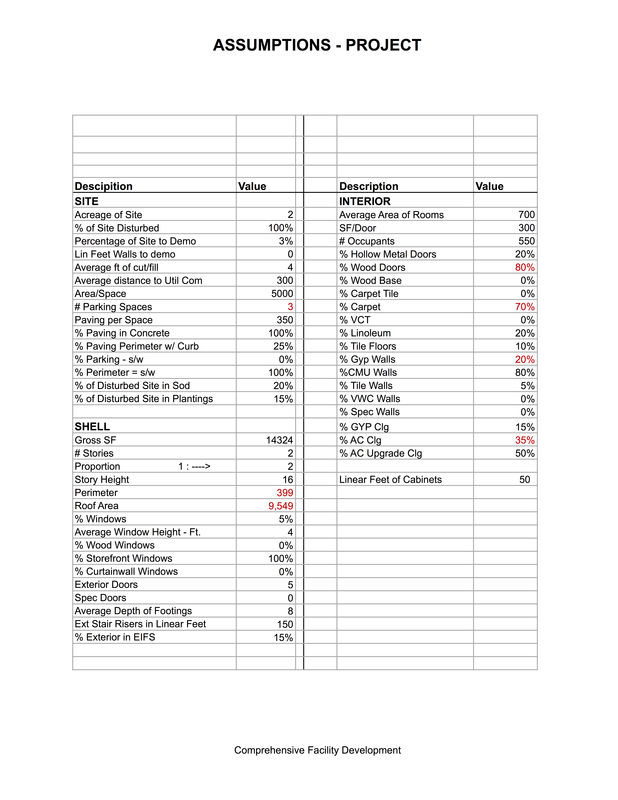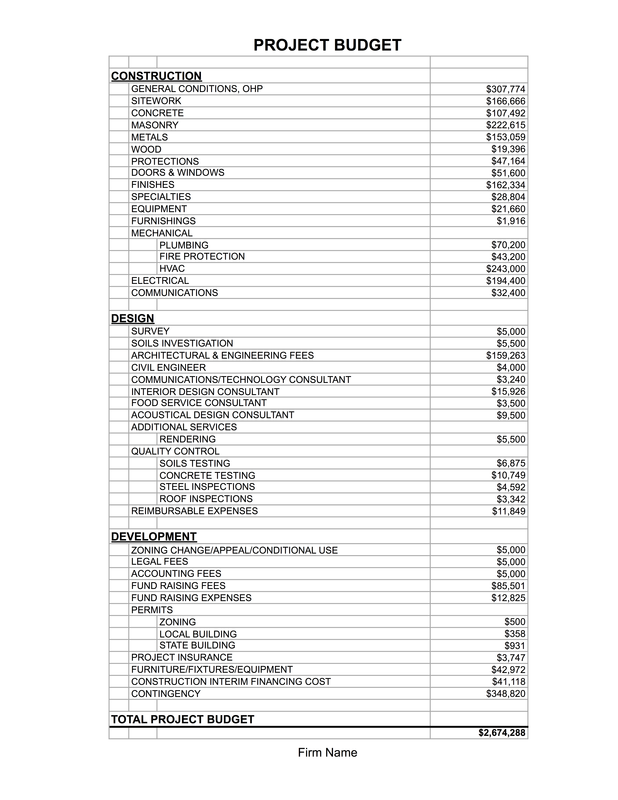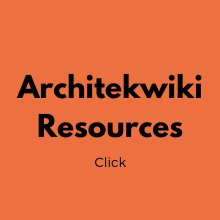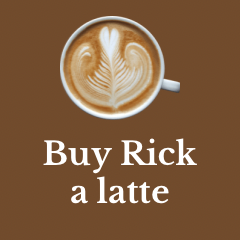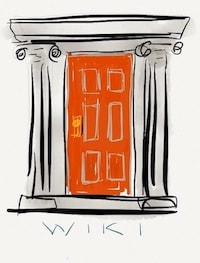|
Architects are not known for being realistic about costs. I don't know about you, but my Alma Mater didn't act as though cost was an issue. About seven years out of school, I got to do my first estimate. I estimated the construction cost of a branch library to within $7,500 of the low bid. When your first attempt is a success, you are going to think you have a 'special' talent. It turns out it isn't a talent. It is just easy if you follow instructions. But my pride and joy is my drawing-less Pre-Design Quantity Take Off System. That is one of the forms I used (above). I guess I saved them for all this time just to show them to you. They were (are?) published by RS Means as part of a workbook called Spec-Aid, which was a check-boxed list of every component in a building. Adding their Construction Cost Data estimating reference, which included a 'how-to' on cost estimating, and that's all I needed. Just follow the instructions and tabulate the results. (BTW there were five more copies of those forms containing the unit costs and quantity takeoffs.) In a nutshell what I learned is that accurate estimates are easily achievable if you base them on as many 'line items' as you can think of. Here's why that works and why it is the key to accuracy. Assume every line item is WRONG by 20%. Twenty percent off is not a good estimate. That is why one-line estimates are almost always wrong. You know - like cost per square foot estimates. The amazing thing that happens when you have 100 line items is that you are 20% too high on some line items and 20% too low on some line items. They cancel one another out! And if you try to do better than accept 20% errors, it gets really accurate. The reality is a bit more complicated, but that is the secret to accuracy in cost estimating - lots and lots of line items. So how do you get accurate line items? The four parts of a line item are Description, Quantity, Unit Cost, and Amount. I have some advice about the first three parts. The fourth part, Amount, is simply math - Quantity x Unit Cost. Description and Unit Cost My advice is to use RS Means for both Description and Unit Cost. Get a copy of their Construction Cost Data. It is all those line items you are after. If you do a lot of estimating, consider the electronic version because you can save a model and update the unit costs automatically. Quantity This can be tedious, but just do it. If you are expert with your CAD/BIM software, you may find some shortcuts to the typical quantity takeoff that I am familiar with. I have to confess to being a sloppy takeoff guy. If you understand the 'lots and lots of line items' concept, then you see why two-decimal accuracy is not the point. So there you are. Nothing but great estimates from now on. Your clients will love you. But the title of this piece is 'Pre-Design Quantity Take Off'. Pre-Design? Really? Yep. I'm going to show you how to estimate construction costs WITHOUT a drawing. The pieces:
These spreadsheets (click to enlarge) took me about a week to put together. We were promoting Pre-Design services. A quick but realistic cost estimate was a key element, but we had no intention of getting into a design to use as the basis of the cost. Download the spreadsheets to see how it works. Briefly, here is what each piece does. The Line Items We were designing mostly Type II-B Construction ("Unprotected Non-Combustible"). This list is an export of the Means 'Cost Works' model that we built for Type II-B Construction. So the unit costs are coming from that RS Means tool, Cost Works, and it is really easy to update. The Quantities are transcribed by hand. Although there are over 100, this is a 10 minute task. Once Quantities are entered, we added subtotals for each Division of Work. Determining the Quantities was all about the next two pieces. The Assumptions The items in this spreadsheet describe the proposed project in all the ways needed to generate quantities of materials. Based on the gross square feet that we developed by doing programming, the size of the site, and a few ratios, we were able to determine the quantities of just about everything. If the client is part of the 'assumptions process', then this becomes a kind of recipe for designing the building. If the actual design begins to depart too drastically from these assumptions, it is time to discuss the ramifications of the new choices. We always used at least a 15% contingency at this stage to cover the unforeseen course that design would take. The Quantities The Quantities follow the order of the line items exactly to facilitate transcription. Each quantity is a formula pulling data from the Assumptions spreadsheet. Red designates formulas and the quantities shown in Blue are best guesses instead of formulas. The Project Budget This is the form that we used to present our estimate. To get to this point usually took about a half hour! You will notice that this form includes much more than just construction costs. We attempted to present the whole cost that our client would likely encounter. I would rather deal with an underfunded client at this stage rather than later when we have much more at risk. The Design and Development cost line items have some fairly elaborate formulas that would get us quickly in the ballpark. Then if the cost seemed unlikely, we would tweak the formula or simply overwrite it. The Ways You Might Use This
|
x
Archives
February 2024
Categories
All
|
Architekwiki | Architect's Resource | Greater Cincinnati
© 2012-2022 Architekwiki
© 2012-2022 Architekwiki
